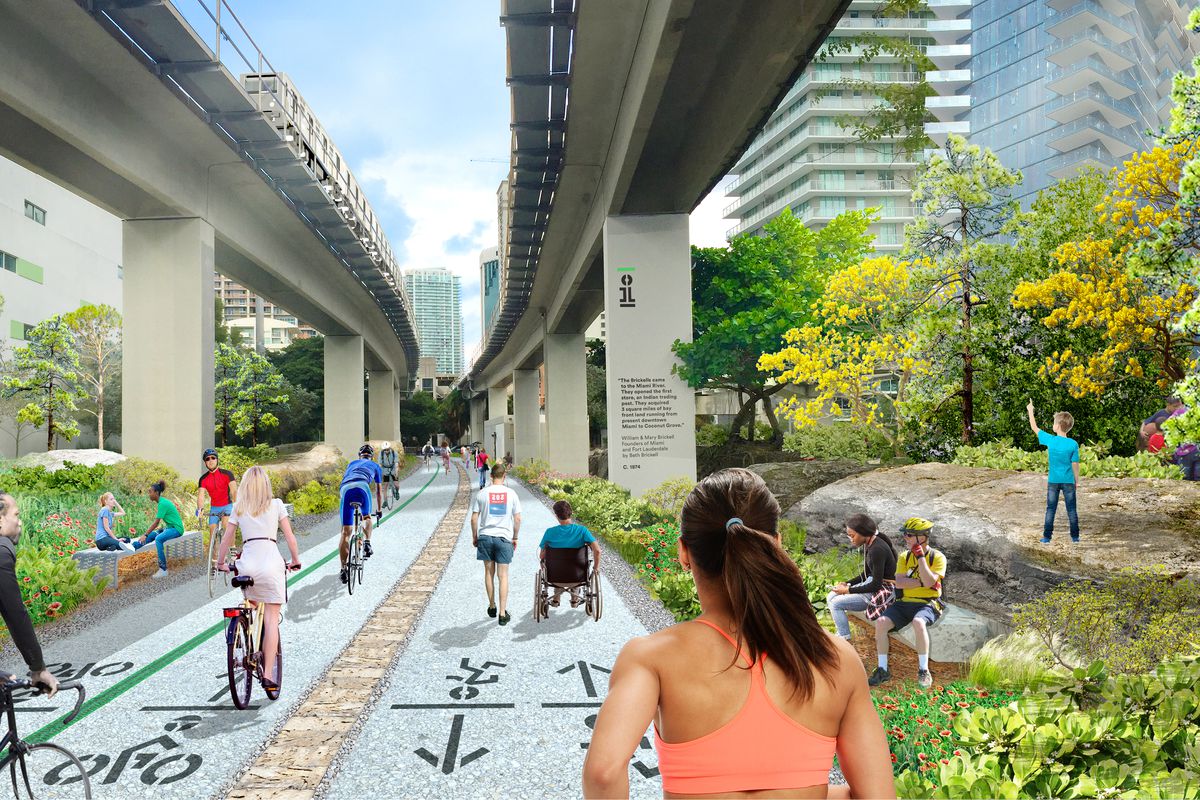
Improvements to two bicycle and pedestrian paths stretching 30 miles along Miami-Dade County’s primary transit corridor could get a combined $3 million through the Florida Senate’s proposed 2023-24 budget.
That’s half what the state gave the two projects last year and just over half the amount Miami Republican Sen. Alexis Calatayud requested.
The budget split the potential apportionment equally between the two projects. The Underline, a 10-mile linear park and urban trail that runs below the Metrorail, would get $1.5 million. The same sum would go to the South Dade Trail, a nonmotorized route that runs for 20 miles alongside U.S. 1 and the South Dade Transitway between the southmost Metrorail station in Kendall and Florida City.
The funding will help pay for plans, designs and amenities, according to funding requests Calatayud filed last month.
For the $140 million Underline project — now in its second phase of development — the state money and $2.5 million in local funds will pay to build and install outdoor benches, drinking fountains, a bike repair shop, public Wi-Fi provisions and other park features.
Miami-Dade Transportation Director Eulois Cleckley anticipates the county’s state funding ask this year will be the last one for the Underline, whose estimated completion date is Dec. 31, 2025.
Improvements for the South Dade Trail, meanwhile, are still in the planning and design phase more than a year after the last funding request was made. The project got $3 million last year, the full amount sought by former Rep. Anthony Rodriguez, who is now a Miami-Dade Commissioner.
This year, Cleckley wrote, the state funds and $3 million spent locally will pay for “design improvements” along the route, “including the enhancement of the existing bicycle/pedestrian pathway, addition of native landscaping and tree canopy, hardscaping, lighting, signage, drainage, recreational facilities and amenities.”
The Senate apportionment for the South Dade Trail is exactly half of what the county wanted. Just two weeks ago, Miami-Dade Commissioner Danielle Cohen Higgins, whose district covers much of the route, traveled to Tallahassee to speak with lawmakers and advocate for the project’s funding, among other issues.
We wrapped up very productive meetings in Tallahassee with our state partners & lawmakers. We advocated against preemption, for additional funding for the South Dade Trail, and for the bills supporting Biscayne Bay. Thank you to those from the Dade Delegation for meeting with us. pic.twitter.com/sHeoxAtU9a
— Commissioner Danielle Cohen Higgins (@CommishDCH) March 9, 2023
It remains to be seen whether shovels hit dirt on the trail before Miami-Dade finishes its $368 million redevelopment of the transitway for bus rapid transit (BRT).
In June 2021, the county broke ground on the “gold standard” BRT project, which is expected to provide Metrorail-like transit service featuring prepaid fares, level boarding and modern, covered stations.
Prior to its approval Aug. 30, 2018, by a local transportation planning board whose members include the entire County Commission, U.S. Rep. Carlos Giménez — then the Mayor of Miami-Dade — said of the project: “For all intents and purposes, it’s rail on rubber tires.”
The busway, also known as the South Corridor, is part of the Strategic Miami Area Rapid Transit (SMART) Plan, an initiative Commissioners devised in 2016 to advance studies of six major commuting corridors to attract state and federal redevelopment dollars.
While the SMART Plan is technically just seven years old, plans to improve transit provisions along those same priority routes date back decades.
The South Corridor was the first of the six to secure such funding — $100 million apiece from state and federal transportation departments to match $100 million in local funds.
Before the onset of the pandemic in March 2020, service on the corridor had been planned to start this January. The new estimated completion date is March 2024.
By then, the county should have some, but not all, of the electric buses from New Flyer of America it intends to operate there.
The Senate budget will go before the Senate Appropriations Committee next week before getting a full floor vote the week after. Senators will then negotiate over the final spending plan with members of the House, which hasn’t yet released its annual spending proposal.
